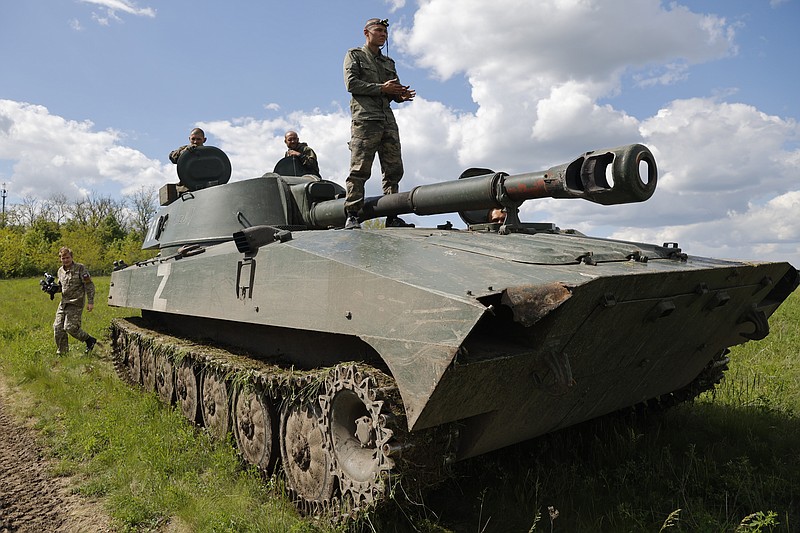By ELENA BECATOROS, OLEKSANDR STASHEVSKYI and CIARAN McQUILLAN
Associated Press
POKROVSK, Ukraine (AP) -- Russia claimed to have captured Mariupol on Friday in what would be its biggest victory yet in its war with Ukraine, following a nearly three-month siege that reduced much of the strategic port city to a smoking ruin, with over 20,000 civilians feared dead.
There was no immediate confirmation from Ukraine.
Russian Defense Minister Sergei Shoigu reported to President Vladimir Putin the "complete liberation" of the Azovstal steelworks in Mariupol -- the last stronghold of Ukrainian resistance -- and the city as a whole, spokesman Igor Konashenkov said.
Russia's state news agency RIA Novosti quoted the ministry as saying that a total of 2,439 Ukrainian fighters who had been holed up at Azovstal had laid down their arms and surrendered since Monday, including over 500 on Friday.
Russia had sought control of Mariupol, on the coast of the Sea of Azov, to complete a land corridor to the Crimean Peninsula, which it annexed from Ukraine in 2014, and free up troops to join the growing battle for control of the wider industrial Donbas region, home to an 8-year-old Moscow-backed separatist rebellion. It would also deprive Ukraine of a vital port.
The city endured some of the worst suffering of the war. An estimated 100,000 people remained from a prewar population of 450,000, many trapped without food, water, heat or electricity. Constant bombardment has left behind shattered and charred buildings in row after row of destroyed apartment blocks and ruined neighborhoods.
Satellite images in April showed what appeared to be mass graves near Mariupol, where local officials accused Russia of concealing the slaughter by burying up to 9,000 civilians. The imagery showed rows of graves stretching away from an existing cemetery in the town of Manhush, outside the port city.
Mariupol Mayor Vadym Boychenko accused the Russians of "hiding their military crimes" in the mass graves and labeled it "the new Babi Yar" -- recalling the ravine in Kyiv where the Nazis massacred nearly 34,000 Ukrainian Jews during World War II.
After continued bombardment, Ukrainian President Volodymyr Zelenskyy said on May 16 the evacuation of his forces from the bunkers and tunnels beneath Azovstal was done to save the lives of the fighters.
One civilian evacuee from Azovstal, who made it to the Ukrainian controlled city of Zaporizhzhia on May 3, said she went to sleep at the plant every night afraid she wouldn't wake up. "You can't imagine how scary it is when you sit in the bomb shelter, in a damp and wet basement, and it is bouncing and shaking," said Elina Tsybulchenko, 54.
While Russia described the troops leaving the steel plant as a mass surrender, the Ukrainians called it a fulfilled mission.
Mykhailo Podolyak, an adviser to Zelenskyy, described the defense of Mariupol as "the Thermopylae of the 21st century" -- a reference to one of history's most glorious defeats, in which 300 Spartans held off a much larger Persian force in 480 B.C. before finally succumbing.

